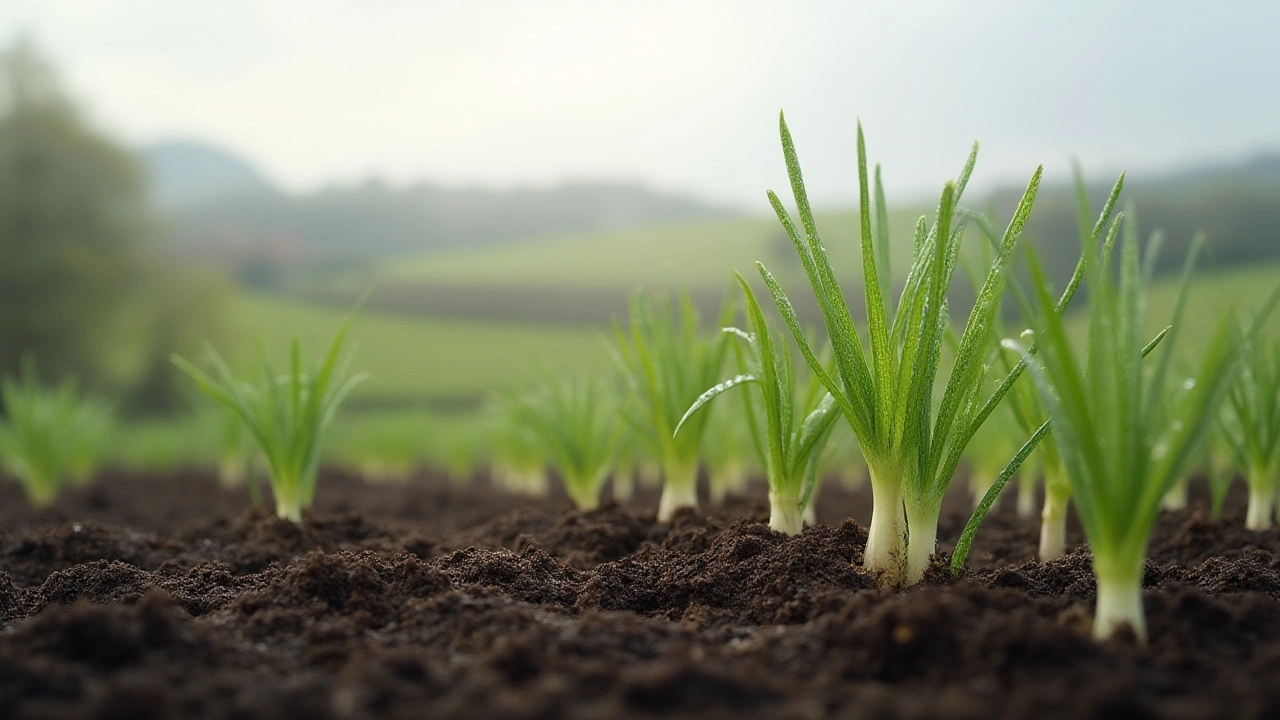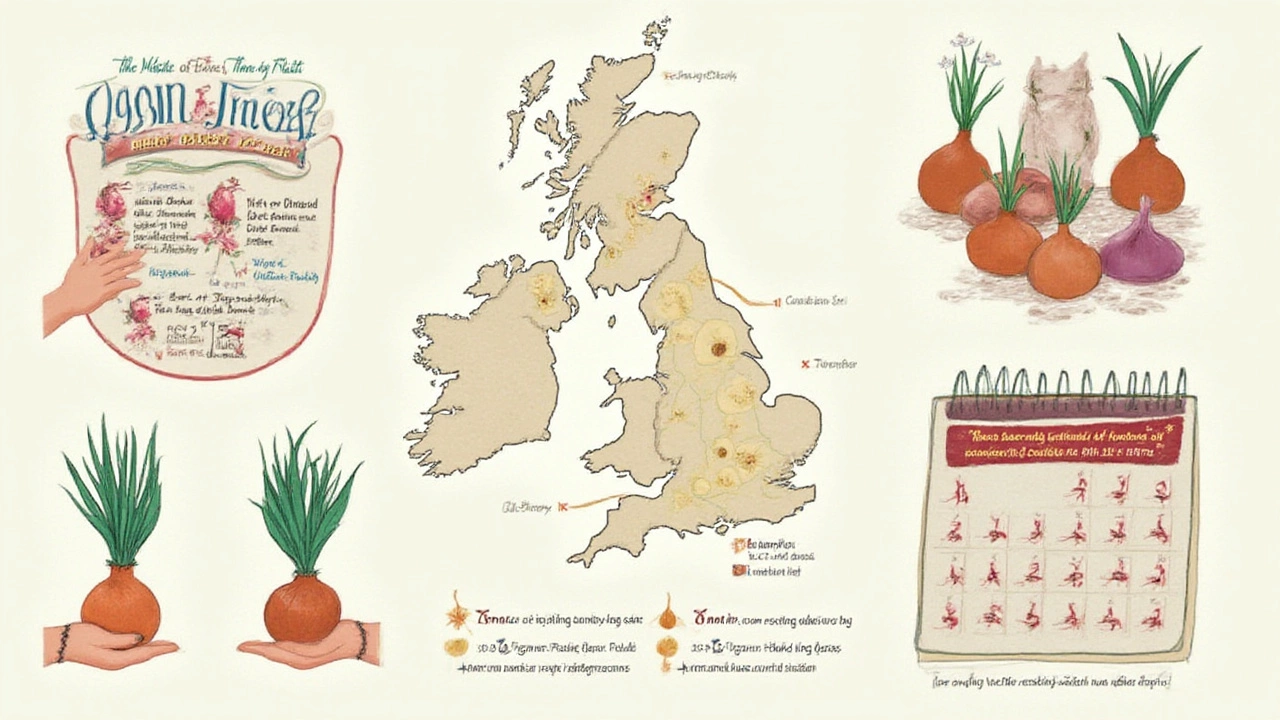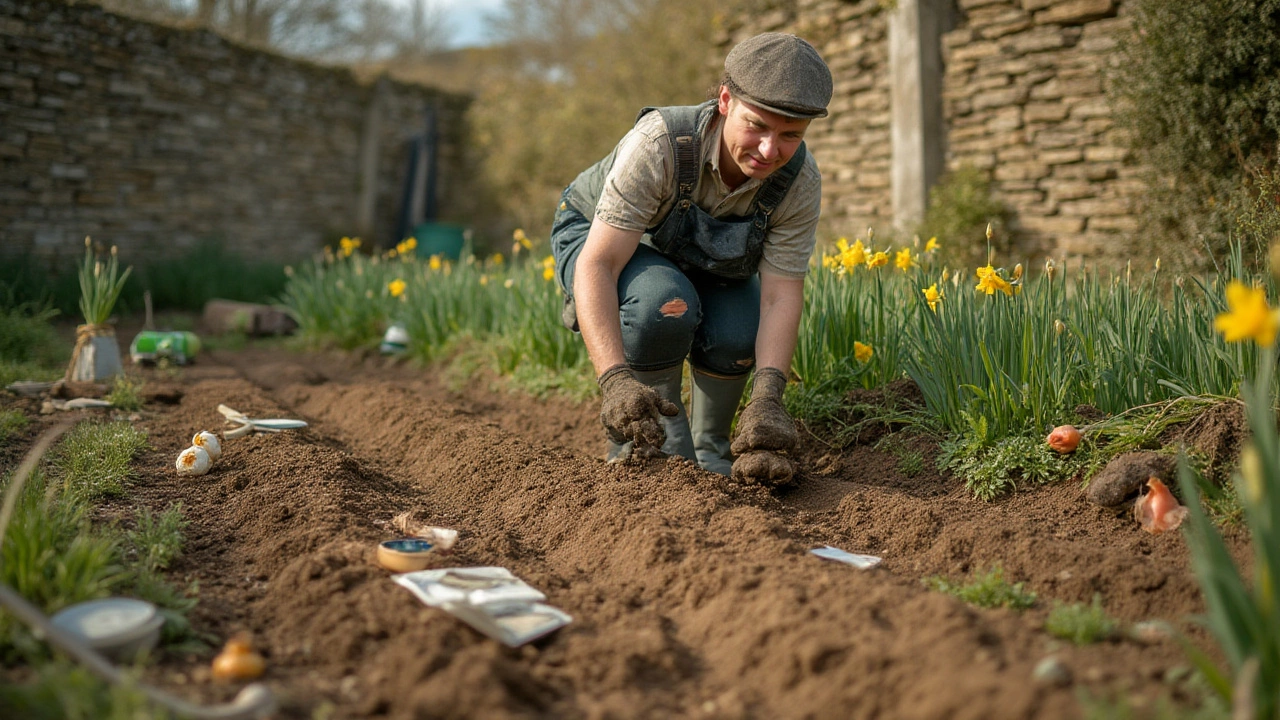If you try to grow onions in the wrong month, you’ll end up with stunted plants and puny bulbs that wither before you can say “onion rings.” Most seed packets just offer generic advice, but your zip code—and even your backyard microclimate—can make all the difference. If you want onions as sweet as candy or pungent enough to make a French chef cry, you’ve got to get the timing right. The truth is, onions aren’t fussy about a lot of things, but they are stubborn about when they go in the ground. Getting this detail right will decide whether you’re bragging about baseball-sized bulbs come harvest, or quietly tossing fine wisps of green into the compost.
How Onion Planting Month Depends on Where You Live
The best month to plant onions really comes down to one thing: where you live. Onions have a reputation for being tough, but they lean heavily on day-length and temperature when developing bulbs. If you’re growing in the north—say Minnesota, Maine, or anywhere that shivers until April—you’re working with a much shorter growing season than someone in Georgia or California. Here’s why: onions need to put down roots and shoot out leaves before warm temperatures tell them to start bulbing up. If you sow too late, they don’t have time to get strong enough.
Let’s break it down by region:
- Northern states (USDA zones 3-5): Start seeds indoors in late January or February for transplanting in April. If direct seeding, wait for the soil to hit at least 45°F in April.
- Midwest and Northeast (zones 5-6): Start onions inside by February, then get them into the ground late March or April. Sets can go in as soon as the ground is workable, usually mid-late March.
- Pacific Northwest: Seeds indoors in January, transplants by late February, or sets outside once the soil thaws—often late February or early March.
- Southern states (zones 7-10): Onions are planted fall through winter. You’re looking at October through January depending on your local frost date; gardeners in Texas, Louisiana, and Florida often aim for pre-Thanksgiving planting for best results.
- Mediterranean climates (think California): Go for November through January. Drier, mild winters are ideal for onions to get established before spring warmth hits.
Onions actually come in three main types: short-day, intermediate-day, and long-day. An onion’s response to daylight triggers when the plant decides to start bulbing. If you plant a short-day variety in the Pacific Northwest, you might never see a full-sized onion. Similarly, long-day types flop in the South, where daylight hours in summer just aren’t enough. Here’s a quick breakdown:
| Type | Daylight needed for bulbing | Best regions |
|---|---|---|
| Short-day | 10-12 hrs | South (zones 7-10) |
| Intermediate-day | 12-14 hrs | Mid-country (zones 5-7) |
| Long-day | 14-16 hrs | North (zones 6-9) |
So when is the best month to plant onions? If you’re in the South, plant as early as November; up North, you might be stuck waiting until late March or April. It really pays to match your onion variety to your climate. Check your local agricultural extension (these folks live for this kind of detail) to time it right, because a two-week difference can make or break your harvest.

Choosing the Right Onion for Every Season
Walking into a garden center, you’ll see seeds, sets (small, dried baby onions), and sometimes transplants. Which do you pick, and does it change your planting schedule? Let’s clear the fog. Seeds give you the most options—heirlooms, super-sweet sweets, even red types that store forever. But seeds take time, and you’ve got to start them early, about 10-12 weeks before your region’s last frost. For most US gardeners, this means planting under lights in January or February.
Onion sets are fast and easy. They’re just dormant baby onions and can be put into the ground as soon as you can work your soil, often 2-3 weeks before your usual last spring frost. Sets are good for folks who skipped seed-starting season or got blindsided by a long winter. The tradeoff? They don’t always grow into big storage bulbs. If you just want green onions (scallions), sets are perfect. For huge storage onions, seed gives you more control.
Transplants are seedlings grown ahead for you. A lot of southern growers buy bundles in January and pop them in the yard the same week. These are perfect if you want to get a jumpstart or if outdoor sowing is risky due to wild spring weather. No matter what, onions hate being crowded. Space transplants at least 4 inches apart; for bigger bulbs, try six inches, especially with intermediate or long-day types.
Day-length is the big deciding factor, but another sneaky detail often forgotten: soil temperature. Onions need soil above 45°F (7°C) to thrive. You can grab a cheap soil thermometer to check. Stick to the ground until you hit that sweet spot. Cold soil stunts growth and sometimes encourages diseases like onion blight. In the South, you can plant while the rest of the country is still shoveling snow, but don’t wait until early spring—the heat will hit before bulbs develop.
For gardeners in hard-to-pin climates—like high-altitude Colorado, unpredictable microclimates, or anywhere that sees late snow—consider using raised beds or hoop tunnels. These warm the soil faster, giving onions a head start and letting you gamble on an earlier planting month. Cover the bed with black plastic or row cover a couple weeks before you want to plant and test the temp again. It’ll save you from rolling the dice with your entire crop.

Battle-Tested Tips for Growing Onions Month-by-Month
Once you nail the planting month, it’s all about smart aftercare. Onions are shallow-rooted, which means they dry out fast and compete poorly with weeds. The best growers use mulch—like clean straw or shredded leaves—right after planting to keep moisture in and keep weeds out. Water matters, too. You want a steady supply but never soggy soil. Too much rain or watering means rot or fungus, especially in spring. Take it easy: aim for an inch of water each week, more if your soil drains fast.
Here’s a quick checklist by month if you’re in the north (adjust by a month or two for warmer climates):
- January-February: Start seeds under lights, keep soil moist, rotate seedlings under grow lights for even growth.
- March-April: Harden off transplants outdoors for a week before planting. Direct sow or plant sets as soon as the soil stays above 45°F. Mulch immediately.
- May: Keep beds weeded and watered. Top-dress with a balanced fertilizer just as the leaf tips begin to yellow.
- June: Monitor for signs of bulbing—leaves will start to thicken. Cut back watering once bulbs begin to swell to avoid rot.
- July: Let leaves flop over naturally. Don’t rush things; this is when onions finish swelling up. Stop watering, and let the tops dry out for a week before pulling onions for curing.
Cool fact: onions will keep growing leaves for up to five months from sowing, and every new leaf forms another ring inside the bulb. More healthy leaves = bigger, more flavorful onions. Don’t be stingy with fertilizer early on, and avoid high-nitrogen stuff later—it’ll just produce giant tops, not bulbs.
To really dial in your planting, pay attention to local weather quirks. Late cold snaps? Use floating row covers to protect young plants. Wet spring? Go with raised beds or plant on ridges to drain fast. If you notice purple blotches on leaves (downy mildew), drench in the morning, not at night, and swap in disease-resistant types next year.
One last pro tip: stagger your planting with different varieties—some for early harvest, some that store best. This way, you’ll never run out of homegrown onions and always have the freshest flavor possible, no matter the month. With the right attention, you’ll be pulling thick, juicy onions from your garden just as supermarket ones start looking tired and dry.
